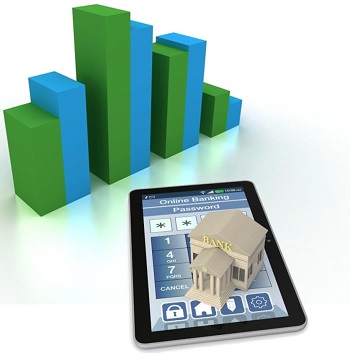Arkadi Kuhlmann is starting a new smartphone based service that is being called ZenBanx.
The founder of ING Dierct, Arkadi Kuhlmann, had been out of the public eye for quite some time, but has recently entered into a mobile banking venture with a new partner, Duca Financial Services Credit Union.
As was the case in his last financial services venture, Kuhlmann is seeking to offer an alternative to the standard.
ZenBanx is designed to provide a cheaper and easier form of mobile banking that will allow for foreign currency exchanges, transfers, and other types of transaction. According to Mr. Kuhlmann explained that the pitch is a smartphone based “regulated bank account with a multi-currency capability” that is “designed to let money travel as freely as humans.” ING Direct Canada was a company that was launched in 1997 and that expanded successfully a few years afterward into the U.S.
ZenBanx is a mobile banking venture in which Kuhlmann has been participating since 2012.
 ING Groep NV sold ING Direct Canada to the Bank of Nova Scotia in 2012 for $3.1 billion. Kuhlmann stated that using this service would give customers the ability to save in as many as 5 different currency positions, as well as the ability to exchange among them. He also said that customers would be able to send money internationally in a way that is far less expensive and less difficult than the current options that are available to consumers.
ING Groep NV sold ING Direct Canada to the Bank of Nova Scotia in 2012 for $3.1 billion. Kuhlmann stated that using this service would give customers the ability to save in as many as 5 different currency positions, as well as the ability to exchange among them. He also said that customers would be able to send money internationally in a way that is far less expensive and less difficult than the current options that are available to consumers.
At the opening of this mobile payments service, the currencies that will be available for exchange and transfer will be the U.S., Canadian, Singapore, and Honk Kong dollar, the British pound, the Euro, the Japanese Yen, and the Indian Rupee.
Kuhlmann spoke of this mobile banking service and his interpretation of ZenBanx by saying that “I think banking and money hasn’t really been able to keep up with a lot of the needs now,” adding that “You and I can move freely around the world, but moving money has become costly and tedious.” Through his past in the financial sector, he has considerable experience in building and working with a less expensive model of banking.
The results of recent research show that a notable percentage of smartphone users use the device to conduct financial transactions.
A recent survey conducted by a financial analytics firm called RateWatch has shown that while a very small percentage of bank customers consider mobile banking to be their main option, accessing an account via smartphone is highly popular nonetheless.
Among the survey participants, 62 percent considered their primary option to be banking in person at the branch.
The 4th Annual Mobile Banking Survey revealed that while people may not think of their mobile devices as their main method of banking, there is still a considerable number of them who actually use those devices for that purpose. Bain & Co., a global management consultancy, conducted a survey that showed that 35 percent of customers worldwide were using their smartphones in order to complete certain bank transactions. That research involved the responses from approximately 83,000 bank account owners.
The popularity of mobile banking is reflected in the changes that many banks are making to cater to the devices.
 Chase Bank, for example, was one of the early entrants into the world of apps and services over mobile devices. This financial institution not only created applications that could be used by customers in order to complete transactions with their bank, but it also advertised it quite heavily through various different kinds of ads. That bank currently has over 18 million mobile customers, according to the figures cited by Gavin Michael, the Chase Bank head of digital.
Chase Bank, for example, was one of the early entrants into the world of apps and services over mobile devices. This financial institution not only created applications that could be used by customers in order to complete transactions with their bank, but it also advertised it quite heavily through various different kinds of ads. That bank currently has over 18 million mobile customers, according to the figures cited by Gavin Michael, the Chase Bank head of digital.
Michael explained that the use of smartphones to complete these transactions is “redefining how we think about banking”. This same attitude appears to be shared by the entire banking industry, at the moment. The survey from RateWatch suggested that from 2011 to 2014, the percentage of banking institutions that started to offer services over mobile devices doubled from having been 41 percent to become 82 percent.
Mobile banking has faced a number of hurdles along the way – and continues to do so. At the same time that its convenience has made it increasingly popular among some consumers, there are many who are highly resistant to using it due to concerns with regards to the security of their devices and the safety of their private and sensitive data.
 ING Groep NV sold ING Direct Canada to the Bank of Nova Scotia in 2012 for $3.1 billion. Kuhlmann stated that using this service would give customers the ability to save in as many as 5 different currency positions, as well as the ability to exchange among them. He also said that customers would be able to send money internationally in a way that is far less expensive and less difficult than the current options that are available to consumers.
ING Groep NV sold ING Direct Canada to the Bank of Nova Scotia in 2012 for $3.1 billion. Kuhlmann stated that using this service would give customers the ability to save in as many as 5 different currency positions, as well as the ability to exchange among them. He also said that customers would be able to send money internationally in a way that is far less expensive and less difficult than the current options that are available to consumers.
 Chase Bank, for example, was one of the early entrants into the world of
Chase Bank, for example, was one of the early entrants into the world of 